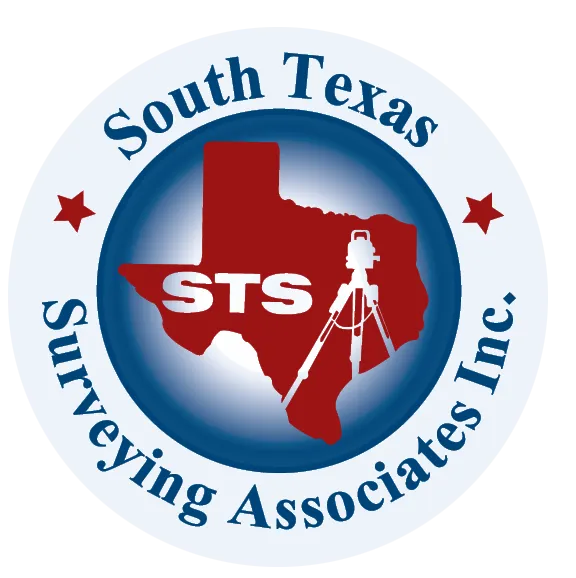Surveying Texas Since 1980 Family Owned, Customer Devoted | Firm #10045400 | 281-556-6918
See Our Latest Blogs

The Connection Between Environmental Impact Studies and Land Surveys in 2025
"Texas, often referred to as the Lone Star State, is a thriving hub for economic growth and innovation, making it an attractive destination for commercial real estate investment." - Chris Evans
The Connection Between Environmental Impact Studies and Land Surveys in 2025
Environmental impact studies are a critical component of modern commercial development, ensuring that projects comply with regulations and minimize harm to natural ecosystems. In 2025, land surveys play an essential role in these studies by providing the data and analysis needed to assess a site’s environmental risks and opportunities.
This blog explores how land surveys support environmental compliance and sustainable development for commercial projects in 2025.
What Are Environmental Impact Studies?
Environmental impact studies (EIS) evaluate the potential effects of a proposed development on the surrounding environment. These studies are often required by federal, state, or local regulations and cover a range of factors, including:
Land Use: How the project affects natural habitats and ecosystems.
Water Resources: Impacts on groundwater, drainage, and floodplains.
Air Quality: Emissions and pollutants generated during construction and operation.
Wildlife: Disruption to plant and animal species.
For commercial developers, completing an EIS is essential to obtain permits and avoid legal or financial setbacks.
How Land Surveys Support Environmental Impact Studies
Land surveys provide the foundational data required for accurate and comprehensive environmental impact studies. By mapping the site’s physical and legal characteristics, surveys help developers identify risks, plan mitigation strategies, and ensure compliance.
1. Topographic Surveys
Topographic surveys map the land’s elevation, slopes, and natural features, providing critical data for assessing environmental risks.
How It Helps:
Identifies flood-prone areas and drainage patterns.
Guides the placement of stormwater management systems.
Highlights slopes or terrain that may require erosion control measures.
Example:
A commercial project in Austin used a topographic survey to design a drainage system that minimized runoff into nearby wetlands, meeting environmental regulations and protecting local ecosystems.
2. Boundary Surveys
Boundary surveys define the legal property lines, ensuring that development activities stay within permitted areas and avoid encroaching on protected zones.
How It Helps:
Prevents encroachment on conservation areas or public land.
Identifies easements or rights-of-way that may impact development.
Ensures compliance with setback requirements near sensitive habitats.
Example:
A mixed-use project in Dallas relied on a boundary survey to confirm that its planned green space complied with local conservation easements.
3. Environmental and Wetland Surveys
Specialized environmental surveys assess specific risks, such as the presence of wetlands or protected species, which may require additional permits or mitigation efforts.
How It Helps:
Identifies wetlands that must be preserved or mitigated.
Detects habitats for endangered species requiring protection.
Provides data for compliance with federal laws, such as the Clean Water Act.
Example:
A logistics center in Houston avoided fines by using an environmental survey to identify wetlands on-site and incorporating them into the project’s green infrastructure plan.
4. Utility Mapping
Utility mapping surveys locate existing infrastructure, such as water lines and sewer systems, which are critical for understanding a site’s environmental impact.
How It Helps:
Ensures that construction doesn’t disrupt existing utilities.
Guides the placement of new utilities to avoid sensitive areas.
Reduces the risk of accidental damage that could harm the environment.
Example:
A retail development in San Antonio used utility mapping to reroute water lines away from a protected stream, preserving water quality and avoiding regulatory issues.
Technology Advancements in 2025 for Environmental Surveys
Modern surveying tools have enhanced the accuracy and efficiency of environmental studies, making it easier for developers to meet compliance requirements. Key technologies include:
Drones: Provide high-resolution aerial imagery for large or hard-to-access sites.
LiDAR Technology: Captures detailed elevation data, even in densely vegetated areas.
GIS Mapping: Combines survey data with environmental overlays to analyze risks and opportunities.
3D Modeling: Visualizes site features and environmental impacts, aiding in planning and communication.
These advancements allow developers to conduct more thorough and precise studies, ensuring that projects align with sustainability goals and regulatory standards.
Case Study: Sustainable Development with Land Surveys
A developer in Fort Worth planned to build an office park near a wetland area. To ensure compliance with environmental regulations, they commissioned a series of surveys, including:
A topographic survey to map drainage patterns and identify flood risks.
An environmental survey to assess the wetland’s boundaries and ecological importance.
A utility mapping survey to plan infrastructure placement without disturbing sensitive areas.
The surveys revealed:
The need for a stormwater retention pond to protect the wetland from runoff.
Opportunities to incorporate the wetland into the site’s design as a natural feature.
Utility rerouting requirements to avoid environmental damage.
The developer successfully completed the project, balancing commercial goals with environmental stewardship and earning recognition for sustainable development.
Why Choose South Texas Surveying for Environmental Projects?
At South Texas Surveying, we understand the importance of balancing development with environmental responsibility. Our team provides accurate, reliable surveys that support environmental impact studies and help developers navigate complex regulations.
Whether you’re planning a new project or addressing environmental compliance challenges, we deliver the insights you need to succeed.
Final Thoughts
In 2025, land surveys are a cornerstone of environmental impact studies, providing the data and analysis needed to ensure compliance and promote sustainable development. By investing in accurate surveys, commercial developers can protect the environment, meet regulatory requirements, and achieve long-term success.
If you’re planning a commercial project, contact South Texas Surveying today. Let us help you navigate the environmental challenges of development with precision and expertise.
Delivering Land Surveys with Attention to Detail
George Owens
Commercial Broker

I have worked with many surveying companies, but South Texas Surveying stands out for their exceptional professionalism, attention to detail, and commitment to their clients.
Kim Wexler
Project Manager

Their accurate and thorough surveys make my job a lot easier, their ability to communicate effectively with all parties involved is commendable. I highly recommend South Texas Surveying.
James Cart
Homeowner

As a new homeowner, I was thoroughly impressed with the professional service provided by South Texas Surveying. I high recommend their services to any one buying a home in Houston.
Contact Us
Email: [email protected]
Office Address: 11281 Richmond Ave
BLDG J, Suite 101,
Houston, TX 77082
Office Hours: Mon – Fri 8:00am – 5:00pm
Office Phone Number: 281-556-6918
11281 Richmond Ave
BLDG J, Suite 101,
Houston, TX 77082
Firm Number: 10045400
Resources
© Copyright 2024 South Texas Surveying Associates
